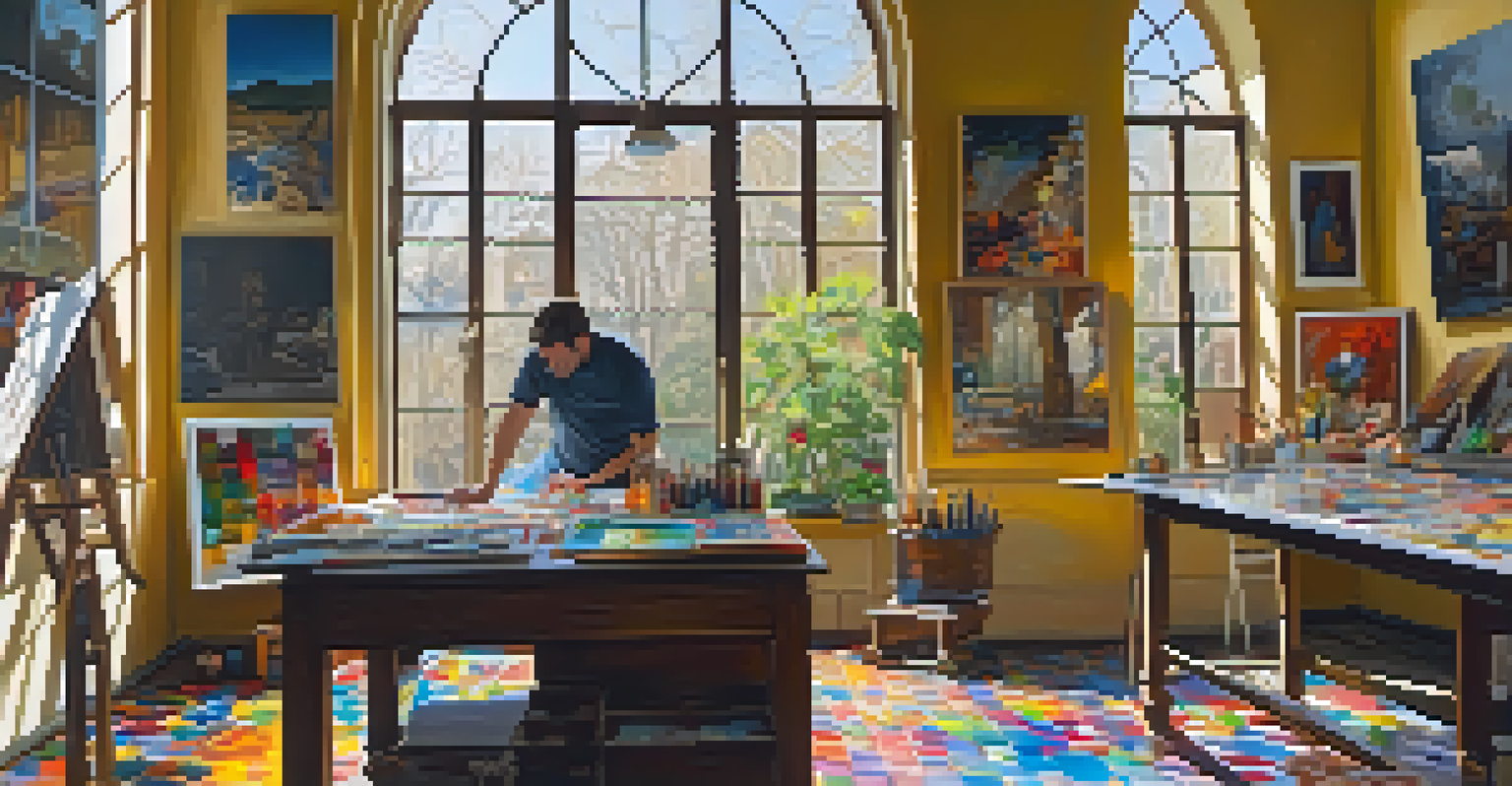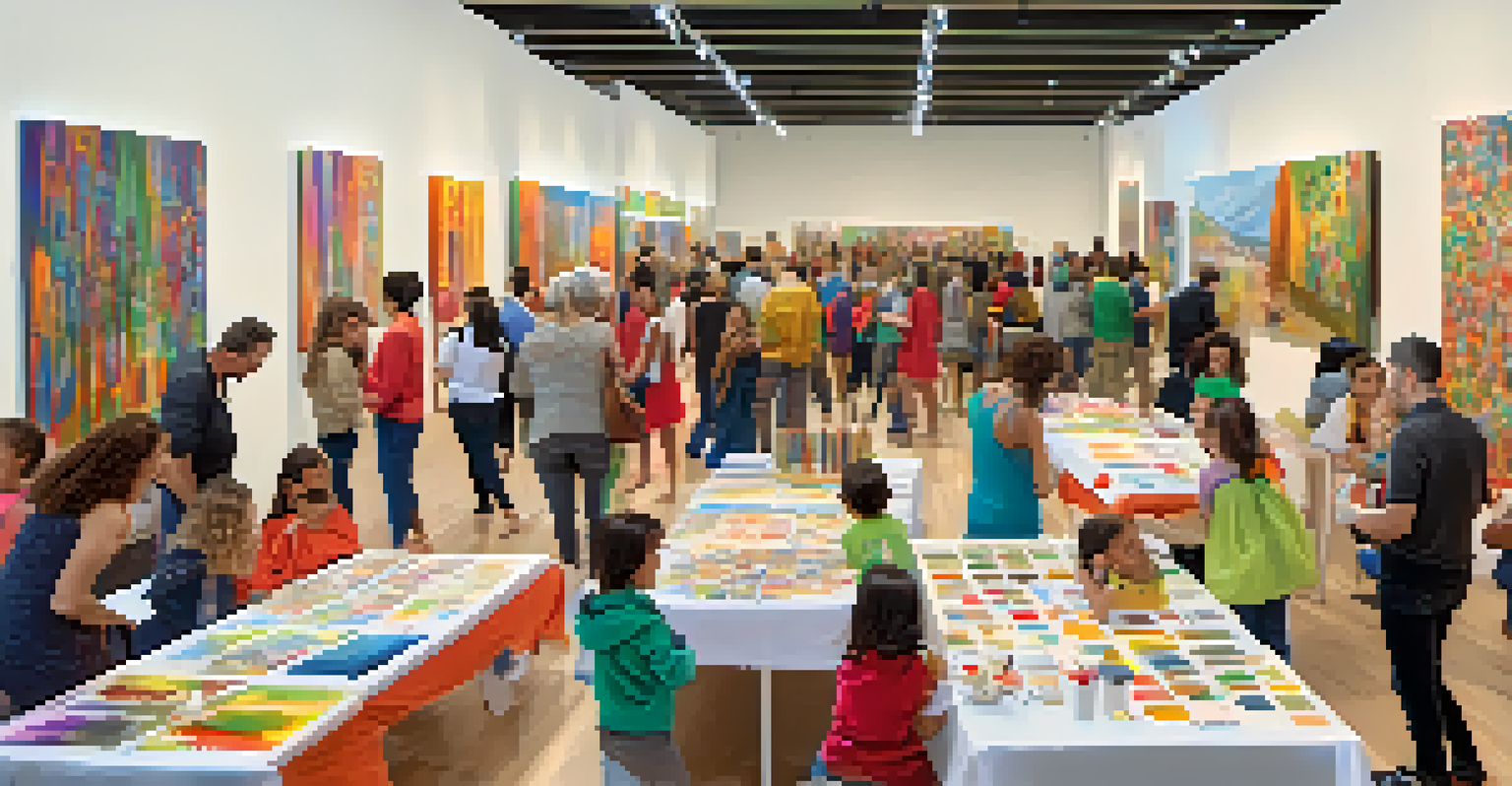The Role of Galleries in Preserving Spanish Art and History

Understanding the Importance of Art Galleries in Spain
Art galleries are more than just spaces to display artworks; they are vital institutions that contribute to the cultural fabric of a society. In Spain, with its rich artistic heritage, galleries serve as guardians of history, showcasing the evolution of art from the medieval period to contemporary times. By preserving and promoting Spanish art, galleries help us understand the narratives that have shaped the nation.
Art is not freedom from discipline, but disciplined freedom.
These institutions create a bridge between artists and the public, allowing for an exchange of ideas and appreciation. They host exhibitions that not only display artwork but also educate visitors about the cultural and historical context behind each piece. This engagement fosters a deeper connection between the audience and the art, enhancing the overall cultural experience.
Moreover, galleries often collaborate with schools and community organizations to promote art education, ensuring that future generations appreciate and understand Spain's artistic legacy. This commitment to education underscores the galleries' role as stewards of cultural heritage, making them essential to the preservation of Spanish art and history.
Galleries as Custodians of Historical Artworks
One of the primary roles of galleries is to act as custodians of historical artworks. Many galleries in Spain house collections that include masterpieces from renowned artists like Velázquez, Goya, and Picasso. By carefully curating and maintaining these collections, galleries ensure that these important works are protected and preserved for future generations.

In addition to housing artworks, galleries also engage in restoration efforts to repair and conserve pieces that have been damaged over time. This meticulous work requires a deep understanding of art history, materials, and techniques, ensuring that restoration efforts are both respectful and effective. Without these initiatives, many artworks could be lost to time, erasing significant parts of Spain's artistic narrative.
Galleries Preserve Cultural Heritage
Art galleries in Spain act as custodians of historical artworks, ensuring the preservation and appreciation of the nation's rich artistic legacy.
Furthermore, galleries often conduct research to uncover the stories behind the artworks, which adds layers of context and meaning. This research not only enriches the viewer's experience but also contributes to the broader academic discourse surrounding Spanish art and history.
Exhibitions: Showcasing Cultural Heritage
Exhibitions play a critical role in how galleries preserve and present Spanish art. Through carefully curated shows, galleries can highlight specific themes, periods, or artists, bringing attention to lesser-known works alongside famous pieces. This approach not only educates the public but also sparks interest in various aspects of Spanish culture.
The role of the artist is to make the world visible.
For instance, a gallery might host an exhibition focused on the influence of the Spanish Civil War on artists of the time, showcasing works that reflect the turmoil and resilience of the era. Such exhibitions provide insight into historical events and their impact on artistic expression, fostering a deeper understanding of Spain's past.
Moreover, galleries often rotate exhibitions, ensuring that their collections remain dynamic and engaging. This constant flow of new displays keeps the public returning, eager to learn more about the rich tapestry of Spanish art and culture.
Supporting Contemporary Artists Through Galleries
While galleries are crucial for preserving historical art, they also play an essential role in supporting contemporary artists. By providing a platform for emerging and established artists, galleries contribute to the ongoing evolution of Spanish art. This support can take many forms, from hosting solo exhibitions to providing resources for artistic development.
Galleries often curate events that promote local artists, giving them exposure and encouraging dialogue within the art community. These initiatives help foster a vibrant cultural scene, allowing Spanish artists to innovate while drawing inspiration from their rich heritage.
Community Engagement Through Art
By hosting workshops and events, galleries foster community involvement and dialogue, making art accessible and relevant to the public.
In addition, galleries frequently collaborate with artists on projects that reflect contemporary issues, ensuring that the conversation around art remains relevant. This engagement not only enriches the artistic landscape but also reinforces the connection between past and present, highlighting how history continues to influence contemporary creation.
Galleries and Community Engagement
Art galleries are more than just exhibition spaces; they are community hubs that foster engagement and dialogue. Many Spanish galleries offer programs and workshops that invite the public to participate in the art-making process, making art accessible to all. These initiatives help demystify art, encouraging individuals to explore their creativity.
By organizing events such as artist talks, panel discussions, and community outreach programs, galleries create opportunities for learning and connection. These gatherings not only educate attendees about art but also allow them to engage directly with artists and curators, fostering a sense of community ownership over local art.
This community focus is vital for maintaining the relevance of galleries in today's society. By actively involving the public, galleries ensure that they are not only preserving art but also cultivating a culture that values creativity and expression.
Digital Innovation: Expanding Access to Spanish Art
In the digital age, galleries are leveraging technology to enhance their role in preserving and sharing Spanish art. Online exhibitions, virtual tours, and social media platforms allow galleries to reach a broader audience, breaking down geographic barriers. This digital presence is especially crucial for engaging younger generations who are accustomed to accessing information online.
By showcasing collections and exhibitions online, galleries can attract visitors who may not have the opportunity to visit in person. This expanded access helps to democratize art, making it available to anyone with an internet connection. It also allows galleries to share their educational resources with a global audience, increasing awareness of Spanish art and history.
Digital Innovation Expands Access
Galleries leverage technology to enhance access to Spanish art through online exhibitions and virtual tours, reaching a broader audience.
Additionally, galleries are using digital tools for cataloging and preserving artworks, ensuring that even if physical pieces are lost or damaged, their digital counterparts remain accessible. This innovative approach not only safeguards art but also enhances the way we experience and interact with cultural heritage.
The Future of Galleries in Spanish Art Preservation
As we look to the future, the role of galleries in preserving Spanish art and history remains crucial. The ongoing challenges of globalization, commercialization, and changing audience expectations mean that galleries must adapt while staying true to their mission of preservation and education. This balance is essential for ensuring that the rich tapestry of Spanish art continues to thrive.
Collaboration between galleries, artists, and communities will be key to navigating these challenges. By fostering partnerships and sharing resources, galleries can create a more robust support system for preserving Spanish art. This collaborative spirit not only strengthens the art community but also enriches the cultural landscape of Spain.

Ultimately, galleries must continue to innovate and engage with the public, ensuring that they remain relevant and impactful. By embracing their role as custodians of culture, they will not only preserve the past but also inspire future generations to appreciate and contribute to the vibrant world of Spanish art.